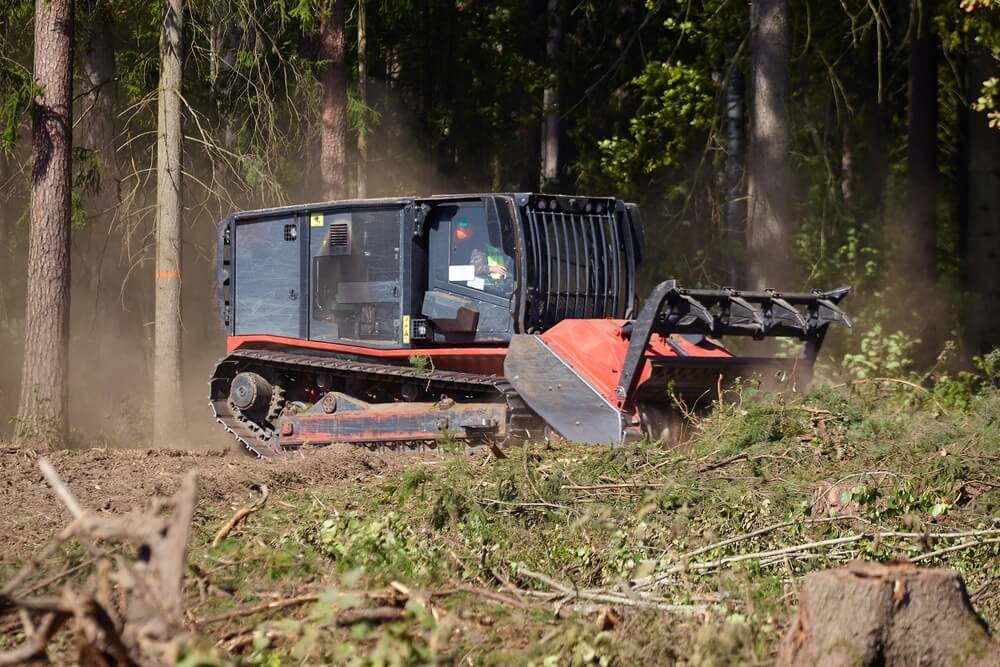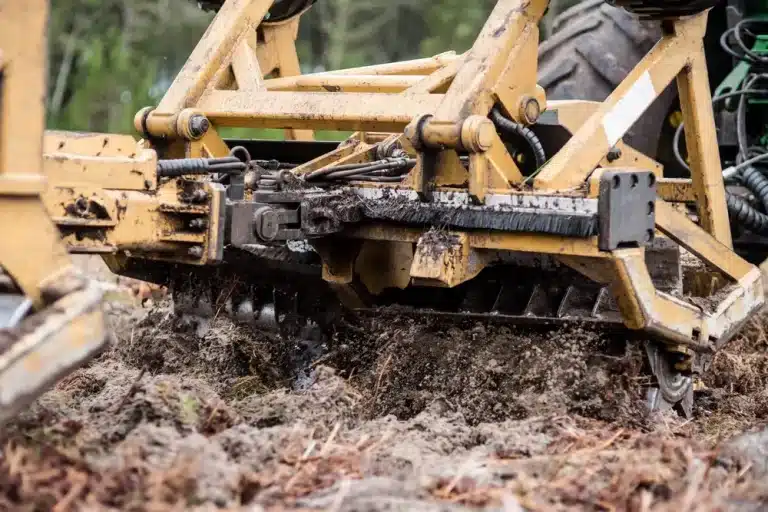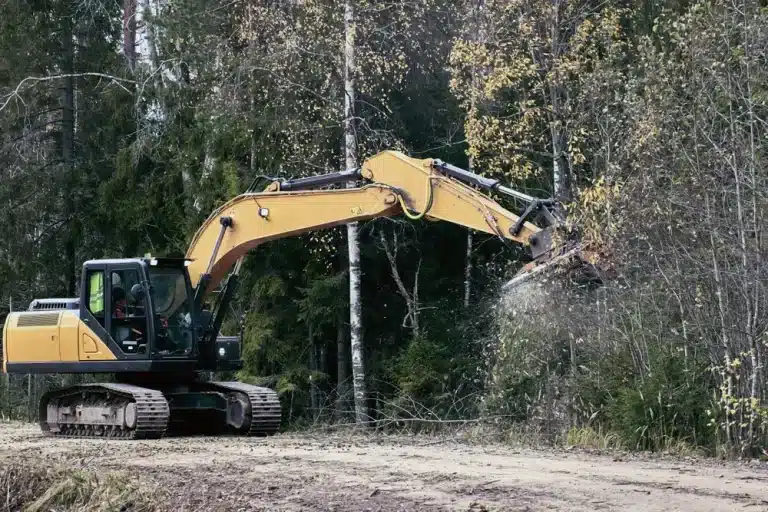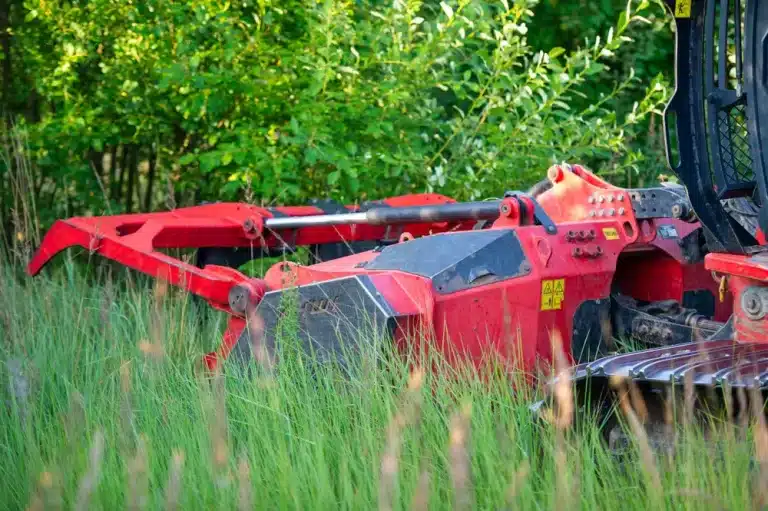Forestry mulchers are a key asset for land cleaning when speed, precision and access to difficult terrain matter. Unlike traditional clearing methods, they grind vegetation directly into the soil, eliminating the need for collection, transport or burning.
Whether used by public authorities, contractors or private landowners, mulchers provide a controlled and efficient way to manage overgrowth, open up inaccessible zones or maintain safety corridors.
They are compatible with excavators, spider machines and skid steers, and are suited for both flat and sloped areas.
Understanding how they perform helps define the right approach for cleaning wild or semi-developed land.
1. Ground-level processing that simplifies logistics
Cleaning land with a mulcher means turning vegetation into mulch where it stands. The machine shreds material directly on the surface without displacing it, saving time and reducing the number of passes required. This is essential in areas where truck access is limited, or where the terrain is too steep for traditional equipment.
On-site shredding with immediate results
Once the carrier engages the mulcher, vegetation is broken down in a single step. There is no need for piles, collection points or follow-up machinery. The resulting mulch settles naturally into the ground and begins to decompose, improving the soil structure while stabilizing it.
Lower transport and fuel demands
Since no debris is removed, there is no need for trailers, haulers or secondary loaders. Fewer machines mean lower fuel usage and simpler operations. On sites far from roads or with difficult access, this becomes a major advantage.
Main logistical benefits of mulching on site:
- No material removal or hauling required
- Fewer machines involved on the job
- Less fuel consumed per hectare
- Lower risk of soil disturbance from traffic
- Faster progress in remote areas
Visit our use cases page for examples of terrain where this approach has proven efficient.
Operators often report gaining a full day’s work by avoiding the need to collect and haul debris.
2. Environmental and soil-related advantages
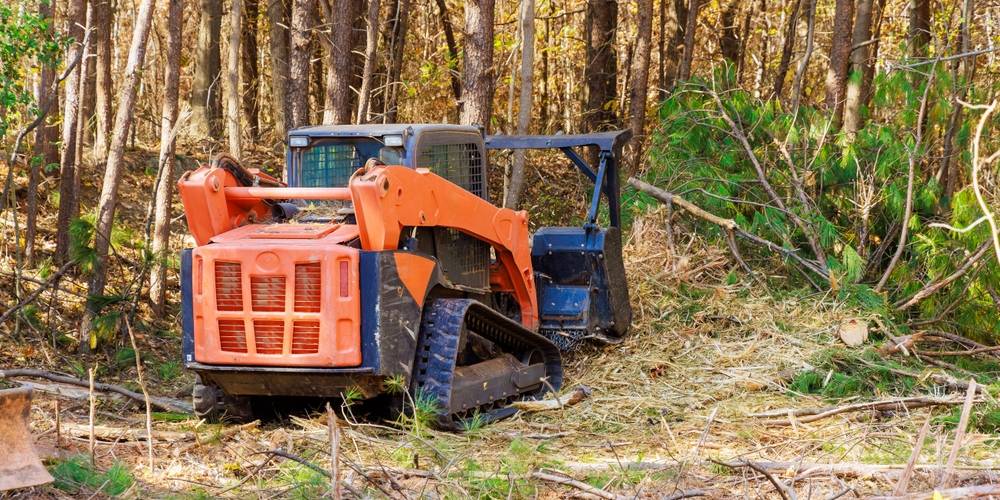
Using a mulcher has several ecological benefits beyond clearing vegetation. The mulch left behind regulates ground temperature, prevents erosion and supports natural regeneration. This is particularly important in projects where the goal is to restore or maintain ecological balance.
Mulch as a protective layer
The layer of shredded material shields the topsoil from sun, wind and rain. It reduces evaporation, holds moisture and limits surface erosion. On slopes, this effect is even more pronounced, as it helps maintain slope integrity and minimizes runoff during storms.
Support for soil biology and regeneration
By grinding plant matter back into the ground, the process returns organic material to the soil. That boosts microbial life and improves long-term fertility. This is critical in restoration zones or areas recovering from fire or overgrazing.
Key environmental effects of ground mulch:
- Helps prevent erosion on exposed surfaces
- Stabilizes slopes and embankments
- Retains moisture and improves soil structure
- Encourages native vegetation to regrow
- Limits the need for artificial soil treatments
These advantages make forestry mulchers a strong ally in conservation and reforestation projects.
3. Efficiency and speed in dense vegetation
When facing dense overgrowth, saplings and tangled brush, mulchers outperform chainsaws and traditional clearing equipment. Their continuous shredding ability allows them to clear large surfaces rapidly without pauses for debris management.
Fast surface coverage
A mulcher with the right rotor system can handle large swaths of terrain in a single session. This saves time compared to cut-and-collect methods. Operators can cover hectares in less time and with fewer interruptions.
High performance in tough conditions
Mulchers are engineered to handle fibrous plants, vines and thick stems. Their teeth stay effective even after repeated impact, and the system is built to keep processing without clogging or jamming.
What makes mulchers efficient in dense zones:
- Continuous shredding without clogging
- Fast progress across uneven or brushy ground
- No need to stop for loading or collecting
- Capable of handling mixed vegetation
- Suitable for repetitive seasonal clearing
To find the right model for your needs, read our guide on how to choose the right mulcher for your machine.
4. Safety and control in hazardous zones

Forestry mulchers allow operators to clean land while remaining in the cabin, limiting exposure to risks such as unstable terrain, thorns or falling branches. The tool acts as a buffer between the machine and the vegetation, reducing manual intervention.
Minimal ground disturbance
Unlike bulldozers or manual clearing tools, mulchers work with precision. They can be used near fences, ditches or utility lines with minimal disturbance. This level of control is important in areas close to infrastructure or in wildfire-prone zones.
Fire prevention and fuel load reduction
One of the main uses of mulchers is in firebreak maintenance. By reducing biomass directly on the ground, the fire load is minimized, and the risk of spread is lowered. This makes them a critical tool for land managers in dry regions.
Why mulchers are safer in sensitive areas:
- No exposed operator during processing
- Can be used near roads, buildings or lines
- Leaves a clear, stable surface
- Reduces flammable material before fire season
- Limits soil disruption, preventing erosion after clearing
In disaster zones, speed and control matter. See how forestry mulchers are used in emergency response on our disaster response tools page.
5. Adaptability to machines and field types
Forestry mulchers can be mounted on different carriers, including excavators, skid steers and spider machines. With the right hydraulic specs and balance, the tool performs across a wide range of terrains and conditions.
Compatibility with modern carriers
Whether working with compact machines or heavy carriers, there is a mulcher head suited to your setup. Modern attachments are designed for easy coupling and safe operation, even in challenging positions or inclines.
Flexible use across industries
Mulchers are used in public works, agriculture, land development and environmental services. They are equally suited for opening trails, maintaining utility corridors or reclaiming unused parcels of land.
Common machine types for forestry mulchers:
- Spider machines for steep or uneven terrain
- Skid steers for flat, accessible surfaces
- Excavators for heavy-duty or deep overgrowth
- Compact carriers for limited-access zones
- Remote-controlled units for safety-critical jobs
Get matched with the right tool on our request a quote page or contact us for direct assistance.
